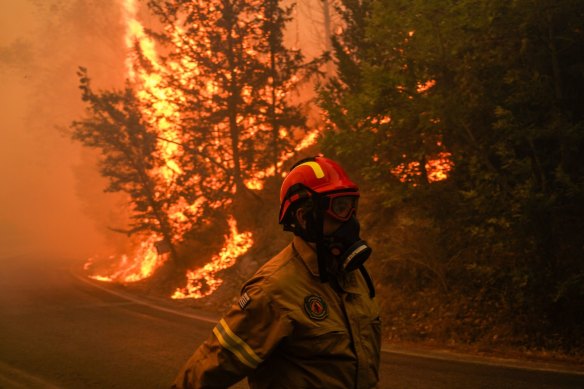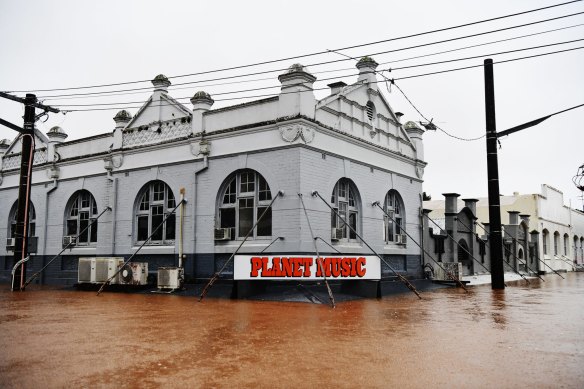This was published 10 months ago
‘The world must rise to the challenge of rising temperatures’
By Melinda Ham
Unequivocal evidence shows that the world is heating at an unprecedented rate, putting humans at increased risk.
The escalation in global temperatures is the result of unparalleled levels of carbon dioxide in the Earth’s atmosphere, the result of human-induced warming, according to the Intergovernmental Panel on Climate Change (IPCC) in a report authored by 782 scientists from around the world.
This is propelling the planet towards a tipping point beyond a 1.5-degree Celsius increase in temperature above pre-industrial levels, when changes to our environment and way of life will not be easily reversed.

A firefighter works to control a wildfire northeast of Athens, Greece.Credit: Bloomberg
July 21 was the hottest day globally ever recorded, while in every month since June 2023 the temperature has broken records, evidence that we need to do more immediately to reduce global greenhouse emissions, according to UN Secretary-General Antonio Guterres.
“Billions of people are facing an extreme heat epidemic. The world must rise to the challenge of rising temperatures,” Guterres said, warning that over 70 per cent of the global workforce – 2.4 billion people – were now at high risk of extreme heat.
Global heating is already changing the climate system in every region of the world, leading to more droughts, higher water temperature, rapidly shrinking sea ice at both poles, rising sea levels and coral bleaching, as well as more extreme weather events everywhere, including more severe cyclones and storms and more intense bushfires and floods.
Since 2008, an average of 21.5 million people worldwide every year have been displaced by climate change events, according to the United Nations High Commissioner for Refugees. Developing countries in the global south are disproportionately affected.
Densely populated low-lying areas, such as Bangladesh and many Pacific island nations, are especially vulnerable. The World Health Organisation predicts that climate change will cause approximately 250,000 additional deaths per year between 2030 and 2050.
Extreme weather events have forced nearly 250,000 Australians to move from their homes since 2008, according to the Climate Council, Australia’s peak national advocacy group, while some communities have been repeatedly pummeled by floods, storms and fires with little time to recover. In NSW, these communities include the Clarence Valley (34 events), Mid Coast (33 events) and Port Macquarie (30 events).

Severe flooding in the Lismore CBD in February 2022.Credit: Elise Derwin
Heatwaves are the biggest, silent killer in Australia, killing an average of 350 people a year.
While Australia has been shifting steadily towards renewable energy – the nation is now powered 40 per cent by renewables, with 3.5 million homes having rooftop solar panels – we need to do more, according to Climate Council chief executive Amanda McKenzie.
“We need to continually raise our voices to politicians at the local, state and federal government levels, saying we are concerned about climate change – now and for future generations – and we want them to keep taking action,” McKenzie says.
“Action is the antidote to despair. The climate crisis can feel overwhelming but if each one of us keeps up that political pressure, and also switches to renewables in our own homes, we can have an impact.”